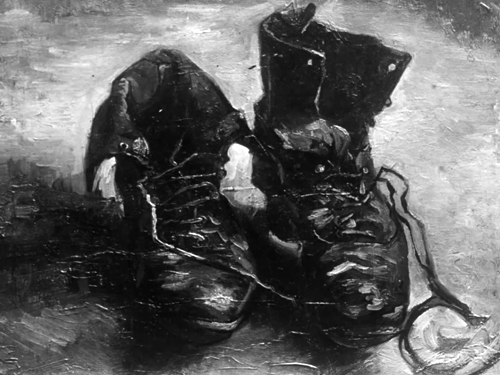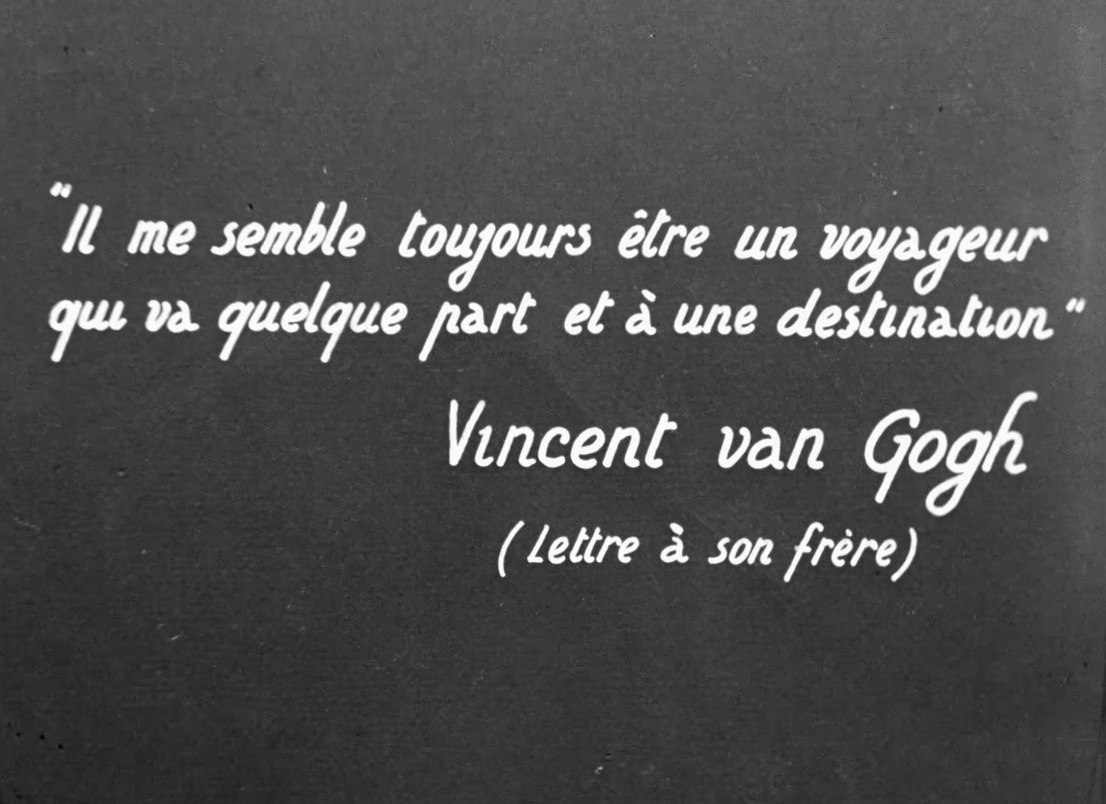
The biography of Dutch artist Van Gogh, illustrated only with images of his paintings and drawings, or details of those, and according dramatic musical score.
“De belangstelling voor Vincent van Gogh kan worden gekaderd in het artistieke en intellectuele klimaat kort na de bevrijding. Zowel de kunst als de figuur van Van Gogh pasten in het existentialistische kunstdiscours dat toen toonaangevend was – de schoenen van Van Gogh, die in de film van Resnais enkele keren opduiken, stonden bijvoorbeeld centraal in het bekende essay over de Ursprung des Kunstwerkes van Martin Heidegger, die Resnais tijdens zijn dienstplicht in Duitsland in 1945-46 had opgezocht. (...) Opmerkelijk is dat de 20 minuten durende film in zwart-wit werd geconcipieerd en vervaardigd, terwijl een kunstenaar als Van Gogh in eerste instantie als een groot colorist geboekstaafd staat. De film moet evenwel gesitueerd worden in een historische context waarin de overgrote meerderheid van kunstreproducties in zwart-wit was. Bovendien slaagde Resnais erin om deze beperking tot een voordeel om te buigen. Het gebruik van zwart-wit maakte het grafische, ja grafologische element van Van Goghs werken beter zichtbaar – zijn schilderijen werden gepresenteerd als de neerslag van een hoogstpersoonlijk handschrift. Zelf merkte Resnais ook op dat het gebruik van zwart-witfilm hem hielp om verbanden te creëren tussen geheel verschillende werken en de nadruk te leggen op ‘l’architecture tragique de la peinture de Van Gogh’.”
Steven Jacobs1
“In another striking moment, the film cuts from a shot revealing the whole of his Les Oliviers 2 (1899) to a close-up of a single crooked olive tree. The camera tilts up slowly, capturing the entire length of the trunk. The film then abruptly cuts to the same shot, only sped up. The movement is repeated before there is another cut to the same shot sped up even faster. The film here dynamically tracks the dissolution of the figure of the tree; the stability of the contour is lost in the ‘wake of absolute movement’. The transformation of the graphic contour from a rendered figure to an image of movement-in-itself is given further emphasis by the melancholy narration, that turns to the voice of Van Gogh and cries: ‘the world turns so fast, how can I catch it’.”
Thomas Jackson2

“I feel as though I am always travelling towards some unknown destination.”
Vincent van Gogh in a letter to his brother, quoted in Van Gogh
- 1Steven Jacobs, “Alain Resnais en de naoorlogse documentaire over schilderkunst”, De Witte Raaf, mei 2010.
- 2Thomas Jackson, “Tracing a Lineage: Alain Resnais's Painting Films and the Animated Aesthetic”, Film Criticism, 2020.

